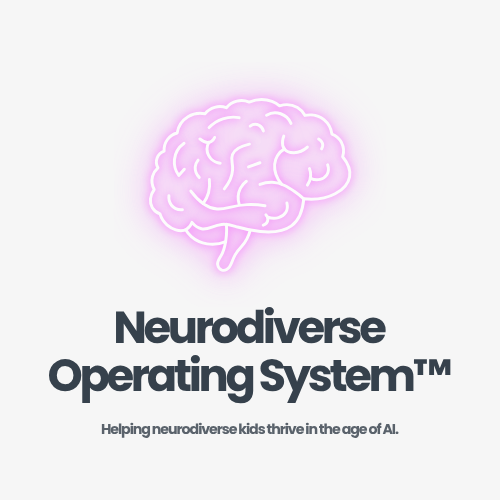Help Your Neurodiverse Child Thrive in the Age of AI
From the creators of the Neurodiverse Operating System™, this free Playbook gives you a handful of guided AI prompts you can use today to help your child learn, focus, express, and laugh — together, not apart.
No overwhelm. Just prompts that work for real families.
Explore Prompts with your Neurodiverse Children, together.
Designed specifically for them

Learning & Curiosity
Turn everyday moments into mini adventures! These prompts spark curiosity, helping your child explore ideas, ask questions, and fall in love with learning — at their pace.

Emotions & Connection
Simple, guided prompts that help your child name, express, and regulate emotions. You’ll build emotional literacy together — without turning it into a therapy session.

Creativity & Play
Unleash your child’s creative spark through AI-assisted storytelling, art, and imaginative play. Prompts that make tech a co-creator, not a distraction.

Focus & Routine
Help your child find calm and consistency. Use AI to build flexible routines that adapt to their brain — not force it into someone else’s version of “normal.”
Why I Created This Playbook and the Neurodiverse Operating System™
As a dad of two neurodiverse boys (here they are with me below!), I know how tough it can be to keep up with their creativity and curiosity — especially with technology changing so fast.
I built this playbook (and the Neurodiverse Operating System™) to make AI simple, safe, and empowering for families like ours. It’s the first step toward something bigger — a future where our children’s unique minds thrive alongside intelligent technology.


From the team behind the Neurodiverse Operating System™ and the ND-OS Community, this free guide was created to give parents and carers of neurodiverse children a gentle, practical introduction to using AI in everyday life.
Inside, you’ll find simple, family-friendly prompts and examples that support learning, communication, emotional regulation, and creativity — all designed for children who think differently.
This isn’t about screens taking over; it’s about using AI as a bridge — a way to connect with your child’s unique mind and help them explore the world with confidence.
